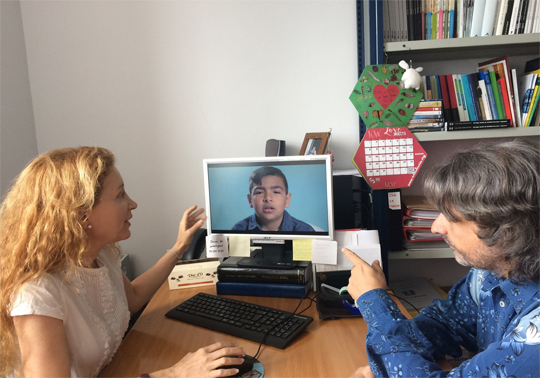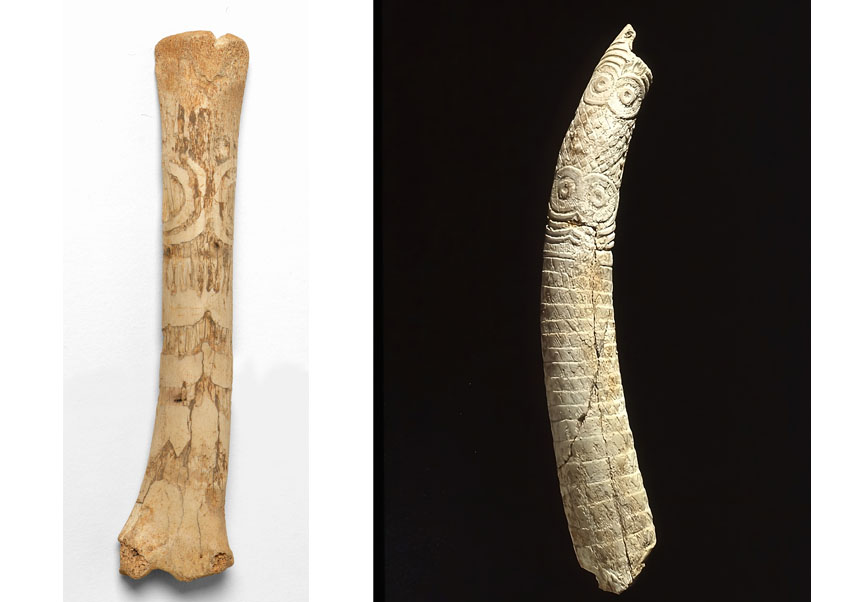The analysis of a thousand of press articles between 2003 and 2012 shows the discrimination against the gipsy community
- June 12nd, 2017

The traditional press attributes to the gipsy community the stereotypes linked to marginalisation. This is because they are regarded as a group culturally different from the rest of society. Nevertheless, when the gipsies communicate via alternative channels such as Youtube, they have a voice contrary to these clichés. A research carried out by Carolina Moreno and Joan Oleaque compares texts from the newspapers ABC, El País and La Vanguardia between 2003 and 2012 and also concludes that there is no will of avoiding this discrimination.
The research, which has led to the article «Del estereotipo gitano en la prensa de referencia al “Yo no soy trapacero” de las redes sociales», has the aim of checking if there is any trend in marginalising this minority. The election of the newspapers has been made according to representation criteria, and among them, 388 of the articles are from El País; 328 from ABC and 254 from La Vanguardia.
The work concludes that accessing to new ways of communication provides the gipsies with the chance of avoiding this damage. Furthermore, the research of Carolina Moreno, full university professor of Journalism in the Universitat de València; and Joan Oleaque, researcher of the International Universitat de València and also in the PRODIS-NET project of the department of Language Theory of the Universitat de València, suggests that the creation of its own image involves a progress for the gipsy community, given their limitation in the access to the media and technological resources.
The video “Yo no soy trapacero” in which you can see some children looking for the definition of the word gipsy in the dictionary, became viral in 2015 as a criticism to the Royal Academy of Spanish Language, which included swindler as synonym of gipsy. In this context, the research considers that the Internet channels offer to the minority the chance to express its own image. For example, on Youtube it is easy to upload and share information. So, for this reason, it was possible to make public this video promoted by the State Council of the Gypsy People.
Therefore, Moreno and Oleaque declares that the newspapers of reference, “when presenting photos, headlines, journalistic proposals and discursive strategies, they do that taken into consideration the ethnical stereotype that attributes to the gypsy community a precivilised and ancient conduct, linked with immigration”. Moreover, they indicates that, in all cases “gypsies are conceived in a vital and moral social stratum away from the rest of society”.
The methodology of the analysis of journalistic texts has consisted on the selection of three temporal periods: 2003-2004, 2007-2008 and 2009-2010. In these periods of time, there was an increase in the treatment of information of the group. The research includes 970 texts with words related to the gypsy community. Carolina Moreno and Joan Oleaque highlight that there is “a reiteration of polemic headlines, controversial images and a trend to become part of the current affairs column. These facts have contributed to carry on the stereotypes that are associated with this community”.
The research also explains that the gypsy community as a minority appears regularly in the press. But, the article concludes that they are represented in a discriminatory way. Despite being present in the most relevant sections of the press, the news related to them are placed in the current affairs column. This fact infringes the codes of ethics of the journalism. However, a new channel such as Youtube make possible the communication of this community without an intermediate and the breakdown from those stereotypes.
For example, in the analysed video it is put an emphasis on how the language generates a prejudice and presents children who discover, surprisingly, that the Royal Academy of Spanish Language associates this community with a discriminatory definition. So, they try to refute it. A proposal that reverts to the effect of the discrimination and it hasn’t been possible in the traditional media.
Professional career
Carolina Moreno, full university professor of Journalism in the Universitat de València. Since her beginnings as a researcher in the Institute of Advanced Social Studies (IESA) of the Spanish National Research Council (CSIC) in 1993 until now, she has published numerous works about representation, treatment and social perception of the health, science, technology and environment in the media. Furthermore, she has headed some research projects about risk and science communication. She has given seminars in Cornell University (Ithaca, New York), in Austral University (Valdivia, Chile) and the universities of Quilme and Nacional Tres de Febrero of Buenos Aires (Argentina).
Joan M. Oleaque is PhD in Communication of the Universitat de València with the doctoral thesis Los gitanos en la prensa española (The gypsy community in the Spanish press), supervised by the full university professor Josep Lluís Gómez Mompart. He has been research member of the European project Romani Lives and participated in the rsearch group about discrimination of minorities Language, Ideology, Power (Lancaster University). He has recently published works related to this line such as Migraciones migrantes en Europa: la expulsión de gitanos en Italia y Francia (2008 y 2010) en la prensa española (El Profesional de la Información, March 2017, vol.26, 2).
Furthermore, he takes part in the research project PRODIS-LIMPIO: Procesos de construcción del discurso político en Internet. Convergencia de partidos, medios y ciudadanos, with the support of MINECO and FEDER.
Article:
Joan M. Oleaque Moreno i Carolina Moreno Castro: «Del estereotipo gitano en la premsa de referencia al “Yo no soy trapacero” de las redes sociales. Caso de estudio sobre la imagen y la representación mediàtica de una minoría étnica». Revista Sistema núm. 246. Abril 2017. Pàg. 81-95.
File in: Teoria dels Llenguatges i Ciències de la Comunicació , Investigació a la UV , Relaciones Interétnicas , Interacción de Grupos
















